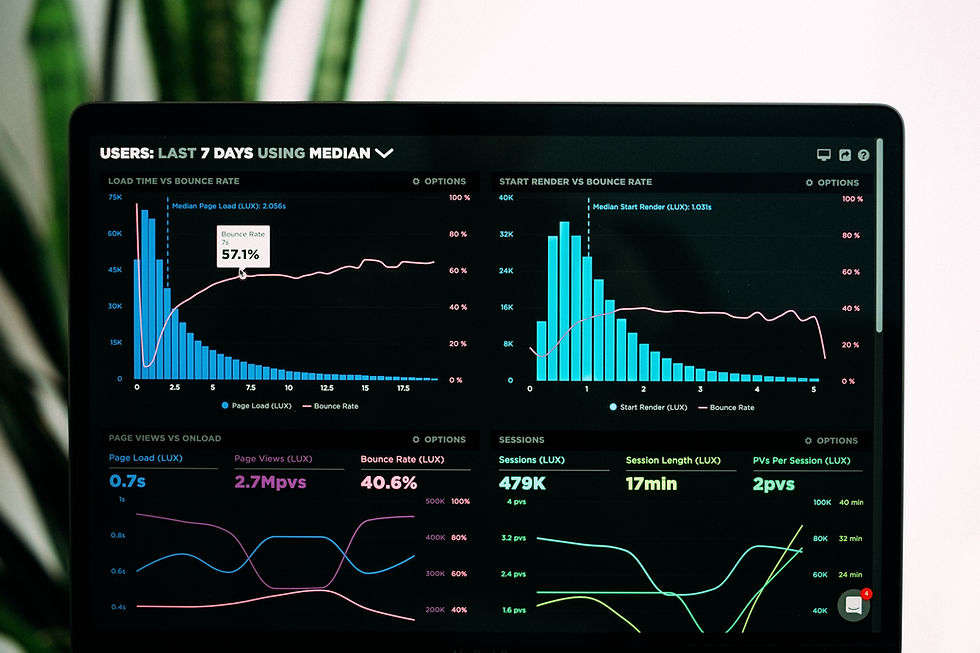7 Technologies Expected to Thrive After COVID
- davide547
- Feb 23, 2022
- 4 min read
Updated: May 30, 2022

Overview
If there's one thing everyone can agree on, it's that COVID-19 has had a major impact globally. The global pandemic has changed every aspect of our lives, from employment to school to our private lives. Despite some consequences being grim, like the uncertainty of when things will return to normal, some have proved to be beneficial. One field experiencing growth and opportunity has been Technology.
Which other fields and innovations are thriving and will continue to be success after the pandemic blows over? Here are a couple to keep an eye on.
1. Telehealth Tech
Throughout the pandemic, telehealth technology has become increasingly invaluable, with numerous channels enabling physicians and patients to communicate remotely without compromising their safety. However, telehealth had been on the rise long before COVID took a toll on the planet. Many in-person hospital appointments can be done remotely over the internet, saving both patients and caregivers a significant amount of time. Furthermore, telehealth benefits a wide range of people, including those who have little or no access to in-person services, such as those who live in remote areas.
Clients are concentrating far more on health and wellbeing, and regular health tests, including COVID tests are being done through both private firms as well as public healthcare organisations. With the appropriate privacy checks, a consequential rise in healthcare data provides an incentive for multiple data and AI experts to create useful strategies that can help mitigate the risk of infection, alleviate patient fear, and provide emotional support to enable them to cope.
2. Artificial Intelligence (AI)
Even without the pandemic, AI has become a core part of our lives, but COVID has brought new meaning to AI. Firstly, given that many workers feel overworked and overwhelmed around usual boundaries, employers largely depend on AI to recover their lack of accuracy. Chatbots, for instance, respond without human involvement to simple consumer inquiries.
Moreover, AI does not experience human error. No sick days or a wage are required. Nor can it be infected with COVID. It will also speed up and enhance businesses — making it more implementable by employers today and potentially the future too.
3. Wearables
Fitness trackers, smart watches and other wearable technology use convenient and straightforward ways to measure, monitor and analyse facets of life, including fitness. For example, smart jewellery enables you to view health information like sleep, heart rate, and exercise. Additionally, implantable devices can track your blood pressure from within your system, giving a more accurate reading.
Devices like these have been common before the outbreak of Coronavirus, but now the scope for these wearables looks more positive and can even help reduce the number of cases. Authorities already use touch tracing applications to track COVID distributed across their territories. Wearable devices can thus be used to detect the virus and potentially infected people. However, issues of data protection come into play.
4. eCommerce
Because of the wonders of eCommerce, it is now possible to leave your house even less often. Anything you need, from detergent to clothes and even groceries can be ordered online and delivered to your door. Due to COVID-19, eCommerce has experienced fast global expansion, ands shows no signs of slowing down. Even after the pandemic, this demand will hit new heights, when we've seen the convenience and measures of protection it boasts compared to traditional storefronts.
If people stay cautious of mixing in person and eventually replace store visits with digital shopping, the growth of e-commerce can become irreversible. Even logistics platforms are rethinking business models to adapt to the new consumer conditions, such as allowing retailers to scale home delivery quickly. We should foresee more of the same in the future.
5. Home Entertainment
On the other hand, in-person entertainment has severely suffered since the outbreak. For the first time in history, Broadway fell silent for an extended amount of time. Movie theatres were forced to shut down, with music concerts only held online. Though this has been promising for at-home entertainment companies like Netflix and Amazon Prime. Such streaming applications have grown in popularity as consumers increasingly rely on televisions, notebooks, tablets, and even handheld devices for TV and video viewing, which will possibly stay the same for the time being.
6. Internet of Things (IoT)
In terms of creativity, the Internet of Things is not a modern one. This integrated framework of infrastructure, equipment, and sensors sharing information over the web is becoming a COVID landscape feature, powering smart houses, smart cities, and much more.
Smart factories are decreasing the number of on-site workers, lowering the relative probability of infection. Instead, workers can use their smartphones to control machines remotely. The Internet of Things is also making it easier to monitor disadvantaged people without having in-person interaction.
7. Augmented Reality (AR)
AR has implications in a variety of fields, including healthcare and tourism. The technology helps individuals to observe situations without physically being prese
Augmented reality will be critical post-COVID as companies of all sizes decide ways to comfortably move their workers back to the in-person workplace or prefer to remain remote. In particular, AR would be critical for training personnel in a variety of situations and processes.
Conclusion
This isn’t the only technology that could — or have already — exploded in a post-pandemic setting. We use telecommuting and online work tools such as Microsoft Teams daily to accomplish tasks. Although some of these technological surges could be short-lived as life returns back to normal, technologies such as telehealth, wearable devices, AR, and others are unquestionably here to remain.








Comments